Yoga for Fatigue is a series of yoga poses and breathing to relieve fatigue. One does not have to be under the siege of a chronic illness to feel fatigued. Excess weight, lack of exercise, over exercising, poor sleep, inappropriate eating habits, and stress are other factors that could leave you fatigued. That is where yoga comes to help. Play with these poses and restore the energy, but do listen to the body and practice accordingly.
Yoga for Fatigue – Asana Sequence
Yoga for Fatigue sequence start with the cat cow pose. Release the spine and back muscles, stimulating the flow of energy and circulation. Practice it for 15 to 20 times, in a slow, controlled way, coordinating each movement with the breath to reap the maximum out of the practice.
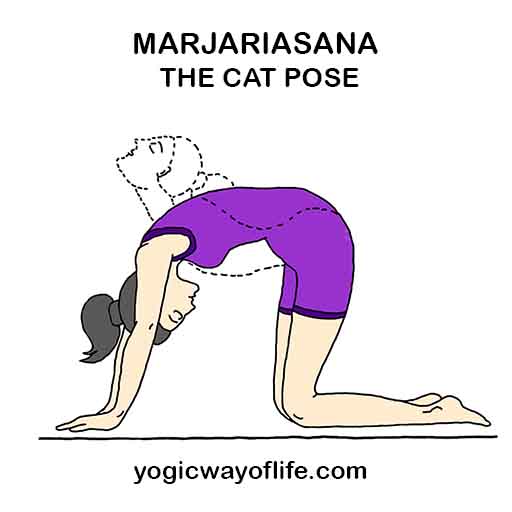
Come on all the fours. Keep the palms beneath the shoulders, stacking the wrists and elbows in one line. Spread the fingers wide, palms resting firmly on the mat/floor. Separate the knees hip-width apart. Extend the toes backward, resting the tops of the feet flat on the mat/floor.
Inhale, scoop the back, squeeze the buttocks and tilt the head back to gaze up. Hold for a count of three. Gently on an exhale, round the back, sucking the navel to the spine and tuck the chin to the chest. Gaze to the floor. Hold for a count of three.
The pose, known as the Elixir of Youth, is one of the basic inversions. However, if there is a preexisting neck or shoulder injury or if the core muscles are weak, kindly refrain from practicing this Asana.
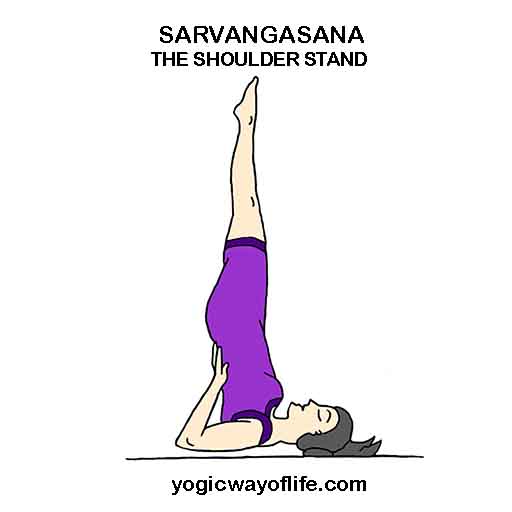
After completing Cat-Cow Vinyasa, lie down on the back and stretch out the legs. Take a couple of breaths to prepare the body for the practice. Inhale and swing the legs up, bringing it 90 degrees to the floor. Take an inhalation here and on the next exhale, push the waist away from the floor so that legs come closer to the forehead. Support the waist with the palms and balance the body. Once the balance is achieved, straighten the legs, allowing the entire body to come perpendicular to the floor.
Hold the posture, keeping the core engaged, for the next seven to nine breaths. One can hold it for up to 3 minutes if the core muscles are really strong.
Gently release the posture, vertebra by vertebra, and lie down for a couple of breaths before practicing the next asana.
Paschimottanasana, a miniature inversion of sorts, allows the detoxification through compression of abdominal organs. It also promotes the circulation of chi when held for six to ten minutes.
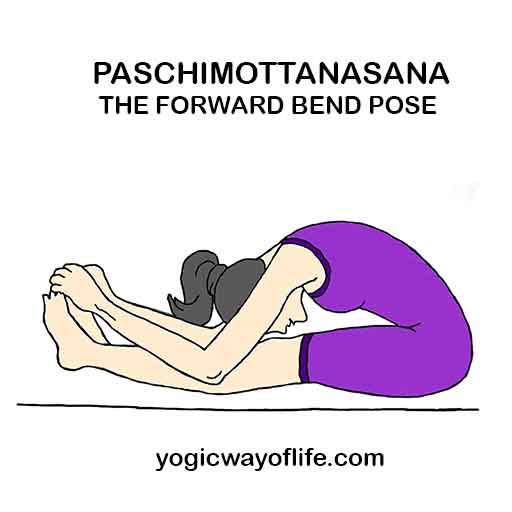
Sit down and stretch out the legs. Lift the flesh away from the buttocks to rest the sitting bones firmly on the floor. Inhale and lift the arms up. Breathing out, fold forward, resting the abdomen on the thighs. Aim to extend the torso forward so that chest rests on the shin. Rest the hands wherever they are and deepen the forward bend with the exhalations.
Hold the Asana for the next seven to ten breaths, slowly extending the period to six minutes.
On the next inhalation, gently straighten the torso and come into Dandasana.
The Adho Mukha Svanasana is the posture of deep relaxation. It is the next pose in the Yoga for Fatigue series. It is also an inversion that stimulates the flow of blood into the brain, uplifting the energies in no time.
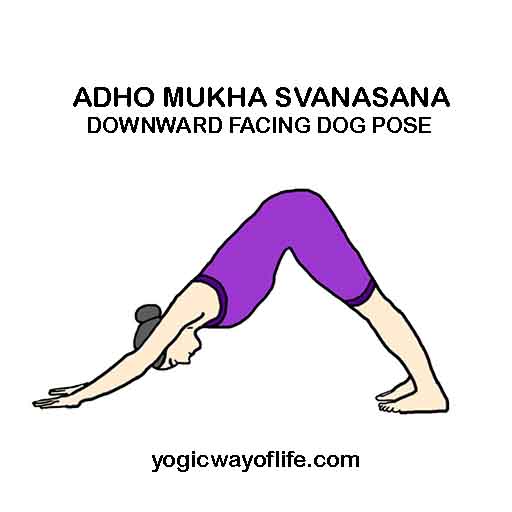
From Dandasana, swing the legs back and come into Table Top position. Pressing the palms into the floor, lift the knees off the floor and push the hips up so that the body resembles an inverted V. Separate the feet as wide as the hips. Stack the wrists under the shoulders and keep the elbows straight, but without locking them.
Push your hips to the ceiling and press the heels into the mat. Allow the head to hang between the elbows. Gaze at the floor or at the navel and hold for the next seven to ten breaths.
Do it halfway or do the complete posture. It is bound to uplift the mood by warding off the fatigue.
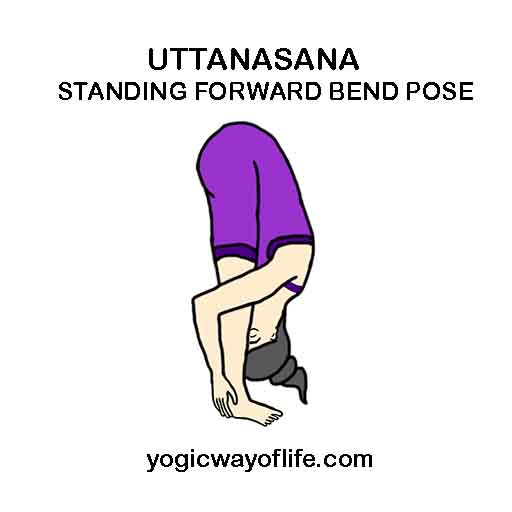
After completing Adho Mukha Svanasana, inhale and walk forward to bring the legs between the palms. Bend forward from the hips, resting the abdomen on the floor. Relax the shoulders, neck, and head. Rest the palms on the shin or cross the forearms and hold the opposite elbows.
Hold the posture for the next seven to ten breaths. Inhale and straighten the torso, curling up the vertebrae, one at a time.
Twists are energy boosters as they promote detoxification and eliminate stress. This Asana is a simple one and has multitude of benefits.
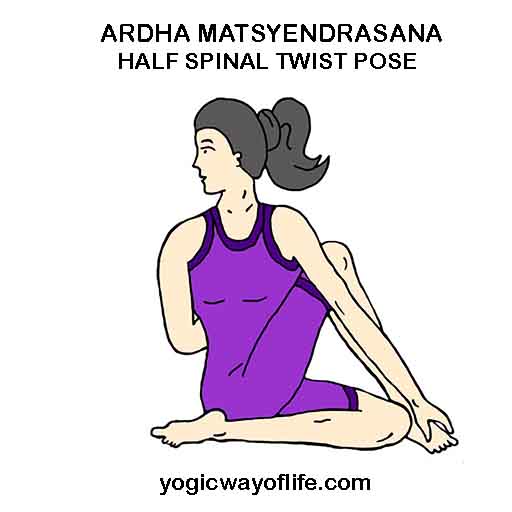
Sit down after completing Uttanasana and stretch the legs out to the front. Bend the left knee and rest the heel under the right hip. Place the right foot outside the left knee. Rest the right palm behind the torso, a couple of inches away from the sacrum. Inhale and lengthen the spine. Simultaneously, lift the left arm. On an exhale, rest the left elbow outside the right knee and grab the right ankle. Inhale here and on the next exhale, twist to the right. Gaze back over the right shoulder. Take an inhalation and if possible, deepen the twist, allowing the entire torso to twist.
Hold the asana for seven to ten deep breaths. Inhale and come back to the center. Exhale and repeat on the other side.
Balasana is the last pose in the Yoga for Fatigue sequence. Relax into the childlike expression with this pose as it decompresses the fatigue and brings in a delightful energy.
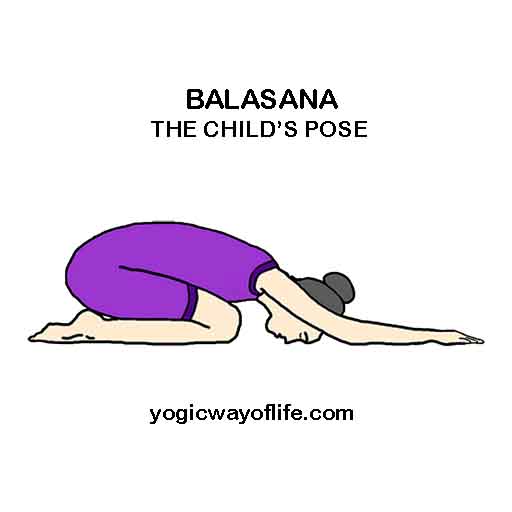
After completing the previous pose, sit in Vajrasana. Inhale and lengthen the spine while lifting the hands towards the ceiling. While exhaling fold forward, and rest the forehead on the mat/floor. Rest the arms on either side and abdomen on the thighs. One could also make a pillow by crossing the forearms to rest the forehead.
Hold the Asana for the next 10 minutes.
Slowly, while inhaling, straighten the torso and come back into the starting position.
Yoga for Fatigue – Breathing exercise
This Pranayama technique cleanses all the energy channels, or Nadis, or the human body. And when the channels are free from blocks, a person will experience unparallel circulation, energizing the body and mind alike.
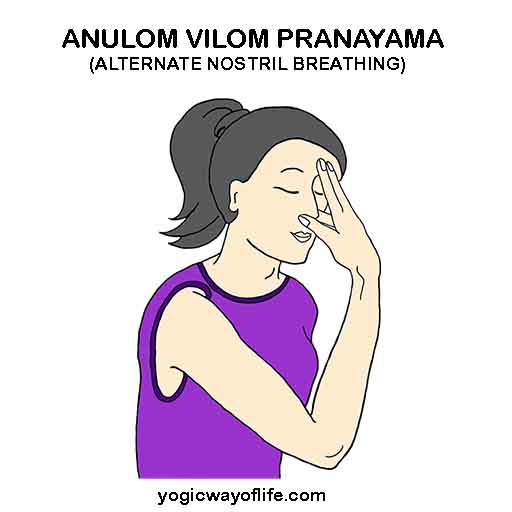
Sit down in a comfortable seated pose, Vajrasana or Sukahasana. Lengthen the spine and tuck the chin slightly. Close the eyes. Take a couple of deep breaths to prepare for the practice.
Rest the left palm on the thighs. Use the right thumb to close the right nostril and the ring finger of the right palm to close the left nostril. Allow the tips of the middle and index fingers to rest between the eyebrows. The pinky finger will draw the energy from the Cosmos to cleanse the body.
Close the right nostril and exhale completely through the left nostril. Inhale through the left one for a count of six. Close the left nostril, open the right one and exhale for a count of six. Inhale through the right for a count of six, close and expel the air through the left for the same count.
Inhale [L] + Exhale [R] + Inhale [R] + Exhale [L] = 1 round of Anulom Vilom Pranayama.
Practice 15 to 20 rounds.
Wrap up the session by lying down in Shavasana for at least 5 minutes to reap the benefits of the practice.

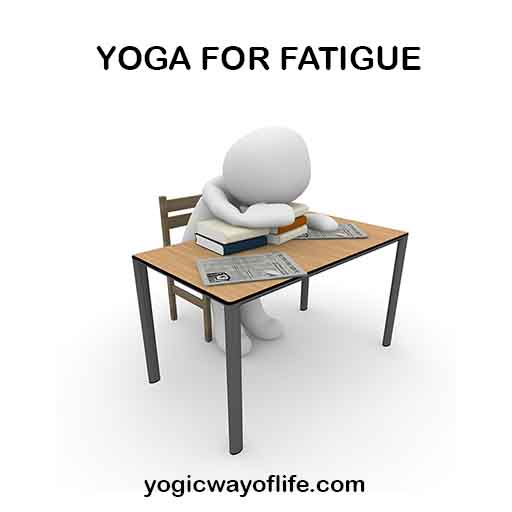
Hari Om
Thank you for sharing this document.
Regards
Arun Kumar.R